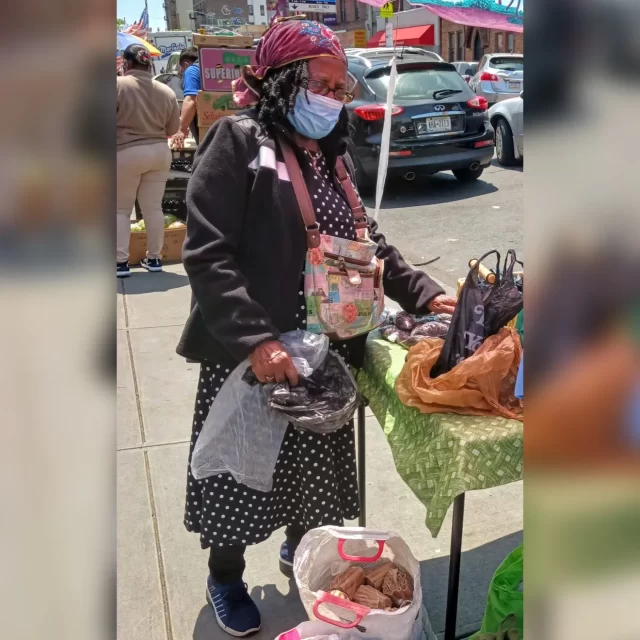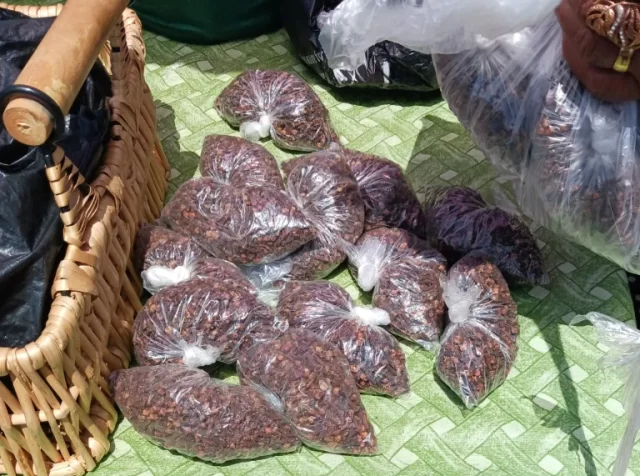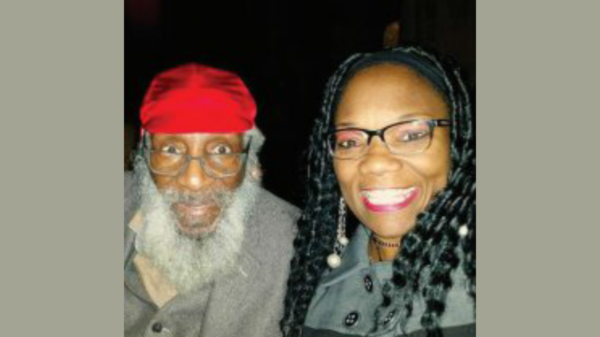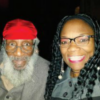
The Haitian Times
www.haitiantimes.com
By Noah Augustin | Guest Author
BROOKLYN — In the heart of Flatbush, between Newkirk and Foster Avenues, you can find street vendors on any given day. Run almost entirely by women, the sidewalk stands are nothing but a plastic table to display the machann’s wares and umbrellas to shield them from the sun. Yet, they draw much appreciation from Haitian residents and visitors looking for a particular spice, tea or other item not easily found in American supermarkets.
More importantly, these vendors bring much authenticity into this part of the borough designated as “Little Haiti.”
“It’s not as big and fancy as the larger markets, but here is as close to Haiti as you can get in New York,” Joanne, a 68-year-old machann said.
This past May on a bright Friday morning, Joanne explained how she landed on the Nostrand sidewalk, while setting up shop in front of the local grocery supermarket. In 2006, she had come to the U.S. to live with her children and grandchildren, in hopes of a more peaceful life.
“When I got to this country…I wasn’t just going to sit at home and live off of my children,” she said, preferring not to give her last name out of general reticence. “I decided to come and open up my little stand because I wanted to fend for myself.”
“Most of the people you see here weren’t working in markets back in Haiti, they had bigger jobs,” Joanne continued. “That’s why they are angry when they come here and have to work on the streets. But not me, I take whatever God gives me.”
“It’s a nice thing to have big markets… But as long as there are Haitians and Caribbeans in Brooklyn, there will be machann like me.”JOANNE, 68, FLATBUSH SIDEWALK VENDOR
People originally from the Caribbean, Africa and Asia are just some of the residents that have made Flatbush their home over the last 50 years or so. Haitians, however, comprise the largest group in the neighborhood, making up about 30% of the 155,000 residents. Thus, the name Little Haiti in their honor.
The borough’s overall Caribbean heritage has been celebrated with events such as the West Indian Day Parade and Haitian Day Parade. Venues such as the recently reopened Flatbush Central Marketplace, consistently showcase Brooklyn’s rich Haitian and Caribbean culture. The timber of Creole and Caribbean-accented English easily let any visitor or resident know they’re as close to the islands as possible without being there.
Visually, few fixtures are as representative of the Haitian presence as the sight of sidewalk stores like Joanne’s. From her station, Joanne sells cornmeal, cloves, vanilla and almond extract, Maggi [bouillon] cubes and fresh ‘djon djon,’ dried mushrooms. She also grows and sells traditional medicinal herbs, and makes shampoo for lice – all of which people of all nationalities, not just Haitians, purchase.
“Almost everyone who comes to my shop comes back sooner or later, not because I have the best products but because I treat everyone with respect and because I’m reliable,” Joanne said with pride.

“During the summer I try to come here everyday because I hate sitting at home,” she added.
The 68-year-old made it repeatedly clear that she values her independence over everything.
“So many Haitians nowadays are greedy nowadays and it’s sad to see. But I could never permit myself to be that way,” she exclaimed, speaking in Creole. “ I work for what I have and God gives me the rest, that’s how I raised my kids to be and I hope that’s how they will raise my grandkids. I am going to work until I’m too old and then I will rest with my family until the Lord comes to take me.”
At one point, one of Joanne’s customers stopped by and shared why she prefers to buy from the grandmother.
“I’ve been to the new Flatbush Central Marketplace, it’s big and a great place for tourists, but it’s not for everyday shoppers and I don’t think that’s what they intend it to be for,” said the customer, who declined to give her name. “I know that I can come to Nostrand any day and I can find what I need from people that I trust, and I think most other people around here feel the same way.”
Asked if she thought stands like hers will survive into the future, Joanne wasn’t sure. For one, the neighborhood seems to be getting louder and is not as well-kept as when she first arrived in 2006. In recent years, central Brooklyn has faced gentrification, as with other parts of the city, that are bringing new residents with different tastes to the area.
“They have been here since before I was here and I don’t think they [sidewalk stands] are going anywhere anytime soon, but I don’t know,” Joanne said.
“I think it’s a nice thing to have big markets like Flatbush Central because they show our culture, just like you do with your newspaper,” she added. “But as long as there are Haitians and Caribbeans in Brooklyn, there will be machann like me.”









